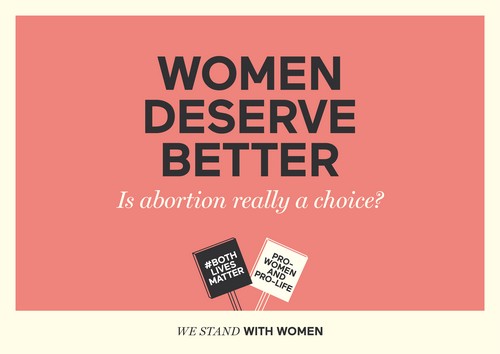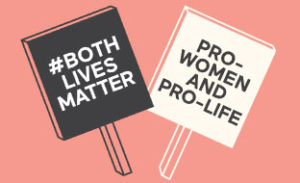As part of a series of reflections for the 50th anniversary of the 1967 Abortion Act, Dr Anne McCloskey, Mb Bch BAO DCH MRCGP, spokesperson for Cherish all the Children Equally, considers how, with the benefit of fifty years of lived experience and government data, we can now understand the impact of that law change. Has the ’67 Act benefited or harmed women?
We hope that these contributions from people across the British Isles and Ireland will provide some much needed context and perspective to this sensitive issue.
“I am a lifelong republican, a socialist, a feminist and an advocate for the rights of the marginalised, and I oppose any change in our laws which today protect the lives and well-being of mothers and their babies.
In 2017, fifty years after the introduction of legal abortion in England, there is here across the island of Ireland, a pressure as never before to change our abortion laws, instead we must learn from this failed social model. The vocal and well-funded “pro-choice” groups want to censor any dissent, drown out the voices arguing for an informed public discourse. They want to allow the ending of intrauterine life at any stage in the baby’s development, for any reason whatsoever, up to and including the day the child is to be born. They talk of “choice” as trumping all other virtues. But what choice is there for the one whose life is ended?
This would be the most fundamental change our society has ever seen. It represents a break with all of our historic and cultural values and a rejection of the ideals which have shaped our society over millennia.
The pro abortion lobby talk persuasively of women’s safety. But it is a statistical fact that Ireland under current laws and practice is one of the safest countries anywhere to have a baby. Our obstetric and perinatal mortality figures are comparable to the best worldwide. Furthermore, throughout Ireland, laws exist which clearly state that where it is deemed medically necessary to end the life of the unborn child in order to preserve the mother’s life, as for example in the case of an ectopic pregnancy or gynaecological malignancy, such action is legal and appropriate. These procedures are routine in all of our hospitals.
We know that in the British Parliament in 1967, abortion was introduced to be used only in very limited circumstances, with the intention of helping only the rare and difficult cases such as dominate public discourse here in Ireland today. But the reality is that now one in four pregnancies ends in abortion. It is not possible to legislate for limited abortion.Today 95 per cent of abortions are done for social and economic, rather than medical reasons, and to be disabled, or even have minor imperfections such as clefts or treatable cardiac defects is sufficient to render your life not worth living. Abortion in the case of disability is legal and is carried out up till the moment of birth. Over 90 per cent of children with Down’s syndrome are aborted, and the hope of some is that this will increase. We marvel at the courage of disabled people during the Special Olympics, but the message is loud and clear “you have no place in our bright new world.”
Of course, what those who pretend to be concerned for the welfare of women won’t tell you is that worldwide, the commonest indication for termination of a pregnancy is to have that terrible “fetal abnormality” of being female. Having two X chromosomes is the single commonest reason for termination across the globe. It is estimated that in India today, there are 45 million women “missing” because of sex-selective foeticide.

All the talk of “clumps of cells” and “part of the woman’s body” is of course biological balderdash. With the advances in sub-cellular biology and 3D imaging, we now have a window on the womb, and an understanding of early human development which was not available in 1967. We know with certainty that the genetic information which shapes each and every human person was created by the random mixture of both parents DNA coming together at the moment of conception to create a genetically unique individual. The unborn child is not part of a woman’s body, but a separate life, albeit dependant on its mother for nutrition and shelter. We can rail against these facts, but we can’t change them.
Even the most vocal advocate of abortion will shudder at the images of dismembered bodies, so obviously human, the products of mid-term or late abortions, or watch recordings of abortion clinic staff casually haggling over the price of foetal parts for sale to pharmaceutical companies. But if the human foetus is merely a part of his or her mother’s body, and has no autonomy, then the logical conclusion is that this is perfectly acceptable. Why be so coy?
It is true that the majority of “terminations” happen at a much earlier stage, but the problem is that once there is an established pregnancy there is no point in time, no dividing line which demarcates the human person from merely “tissue”. The process is a continuum.
During my early medical training in Belfast, I worked in the Special Care Baby Unit of the Royal Maternity Hospital. Watching those tiny premature infants fight for life convinced me absolutely of the humanity of the pre-born child. These wee scraps, maybe as young as 23 weeks gestation and smaller than a bag of sugar certainly felt pain, hated us all for jabbing and poking them, and loved being soothed and petted.
My republican political beliefs mean that I am secularist in terms of how the state should function. We cannot condemn theocracies or religious fundamentalist rule in other states, while expecting preferential treatment for a particular religious or moral opinion at home. One’s religious beliefs are just that-a personal faith system, however deeply and fervently held. The abortion issue is a wider one, and while I appreciate that many pro-life groups are driven by religious considerations, as is their right, many pro-life activists seek to frame the discussion in terms of human rights, and a rejection of individualism, monetarism and discrimination. Only by asserting the worth of individual member of the human family can we have healthy societies.
In every household in every street in this town, live people whose advent may not have been “planned” or “wanted”, but who are valued and valuable members of our communities- our friends and neighbours, colleagues and even family members. Thanks to the work of the team at “Both Lives Matter”, we know that in the North, 100,000 people are today alive who would not be if the Act extended here. Robust statistical analysis proves this figure to be accurate.
In my work as a GP in a socioeconomically deprived area, I regularly see children, mainly female, as young as thirteen or fourteen in the surgery looking for contraception. They often are sexually active without any consideration of the alternatives, or awareness of what healthy age-appropriate relationship look like. There are others less fortunate who may be in abusive or violent relationships, at risk of sexually transmitted disease, unplanned pregnancies or worse. Poverty, poor employment prospects, housing problems, mental health problems and the effects of austerity make many women vulnerable, and these problems need addressed urgently if we truly care about their welfare. The objectification of women in the advertising and the pornography industries add to the insecurity and low self-esteem felt by many. Young men at times seem surprised when I try to explore with them issues around sexual health, and the responsibilities of fatherhood. Contraceptive services should be accessible, non-judgmental and free at the point of use. The service available may not be perfect, but I believe it is working for most. Of course, men need to stop regarding birth control as a woman’s issue, and realise that abortion injures men too. Informed choices based on knowledge and respect for the other can prevent the non-choice which abortion represents.
One hundred years on from the suffragette movement, and fifty years from the legalisation of abortion, women are still not in control of their lives in many ways.
One of my cousins was asked, aged about seven or eight, “What do you want to be when you grow up?” and she answered, “I just want to be a plain ordinary woman like my mammy”. Other women want to be quantum physicists. They can be empowered and supported to achieve either or both goals.
Now that’s what I call choice.”

